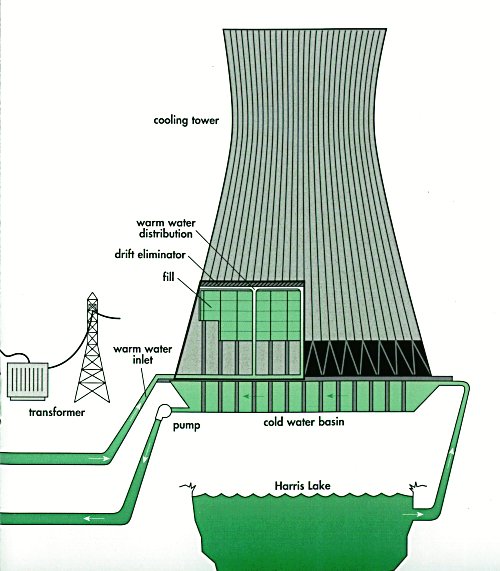The Harris Nuclear Plant’s 523-foot cooling tower may be seen from downtown Raleigh, roughly 20 miles distant, on a clear day. It now serves as the power plant’s enduring symbol. On the other hand, you won’t see a cooling tower if you travel 180 miles southeast to the Brunswick Nuclear Plant in Southport, North Carolina, which is located on the Atlantic coast.
Why does one have a cooling tower when both are nuclear power plants?
Let’s first go over a cooling tower’s function. Every thermoelectric power plant that converts heat into steam to power a turbine generator requires some sort of cooling system. A once-through cooling system is used by the majority, including Harris and Brunswick, and it draws water from a lake, river, or reservoir.
Harris and Brunswick differ mostly in terms of geography and the source of their cooling water.
Second, it’s crucial to remember that both plants have cooling systems that are intended to chill the plants while also safeguarding the environment. In reality, the Clean Water Act of 1972 required the use of cooling towers for new power plants with a capacity greater than 100 megawatts (MW) in order to save the aquatic life in the river or lake where the cooling water is drawn.
The 4,100-acre Harris Lake was built to serve as the cooling water source for the Harris Plant. The lake’s water is piped into the cooling tower basin.
After passing through the plant’s condenser and absorbing heat from the steam, water from the cooling tower basin returns to the cooling tower. After that, the water is sprayed onto a grid located in the cooling tower’s middle. Warm falling water is passed by the cool air that rises from the hollow centre.
A discharge pipe returns water to Harris Lake at a temperature that is within one or two degrees of the lake’s typical temperature to complete the cycle. This guarantees that the fish in Harris Lake won’t suffer any harm. Boating, water skiing, and sport fishing are all popular on the lake.
With the exception of the source and amount of the water source, the cooling procedure is similar to the Brunswick Plant. Instead of pumping water from a man-made lake into a cooling tower basin, the Cape Fear River is used to supply the condensers at the facility. The warm water is then released and cooled as it makes its way via a man-made discharge canal for more than five miles before reaching the Atlantic Ocean! The ocean’s swift evaporation of the warm water spares the aquatic ecosystem from damage (and actually makes quite the fishing spot for local anglers).
So Cool Facts:
- Construction of cooling towers is done to safeguard aquatic ecosystems and to cool down plants.
- Instead of the cooling tower, a containment structure houses the nuclear reactor.
- There is no radioactivity in the cloud at the top of the cooling tower. Never coming into contact with the water in the cooling tower, the water in the reactor remains in a closed system.
- In America, there are more than 250 cooling towers on power stations, but only about 100 on nuclear ones.
